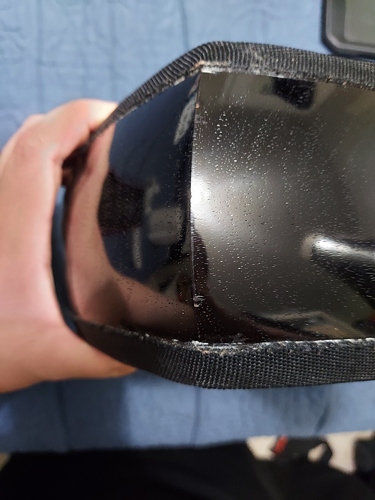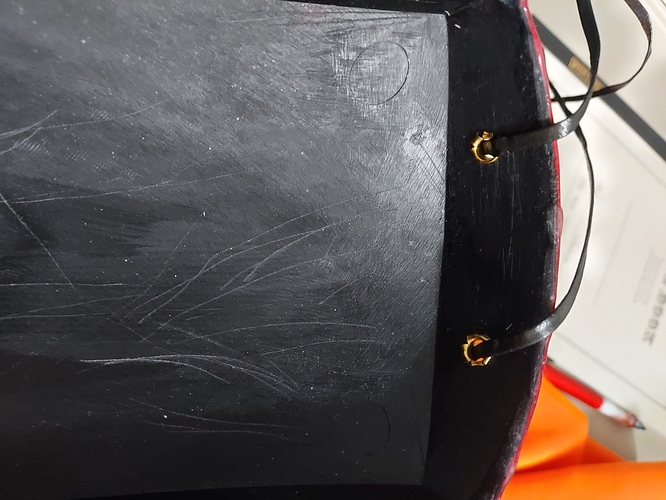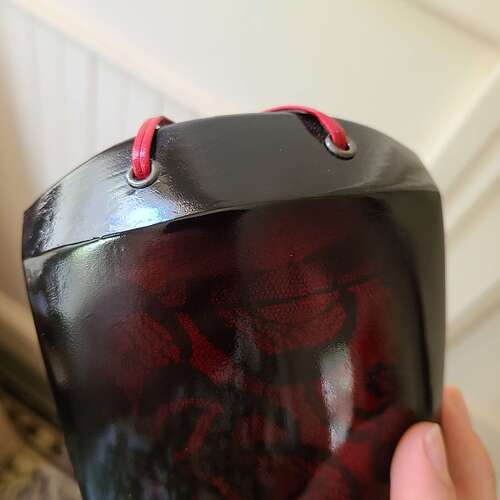This Dou seems to be coated in India Ink, most specifically archival grade India Ink, which is commonly used for Ebonizing wood quickly.
You can buy the “Fastball” brand of archival grade India Ink on Amazon, and do the delicate work of painting the deeper bump/chip-off layer by layer until it is at the same level of the rest of the wood.
You can also do full layers of ink until things are smooth again.
As for the Doukake, I’m sorry to say, but this is quite low quality, with the sharp edges of the grommits exposed, prone to scratch the wood. Good quality Doukake will have an internal layer of paper, which you can easily add by yourself, covering the metal parts and avoiding future scratches.
If you don’t want the trouble of covering the internal part of the Doukake in paper, you can easily smooth the grommits by using superglue (be careful with it!) and accelerator, to quickly build up filling around it and cover the sharp edges. Just put a little bit of (non-gel) superglue on the sharp bits, spray a little bit of accelerator, and wait for 30 seconds. Repeat the process until you are satisfied that it is smooth and won’t scratch your Dou anymore. If you accidentally put too much glue and close the hole, just use a drill bit (manually, not with an electric drill) to open it again.




 Perhaps, putting in some felt over the metal parts? But I am not sure, how much this would mess with the fitting to the dou…
Perhaps, putting in some felt over the metal parts? But I am not sure, how much this would mess with the fitting to the dou… That would appear to be the from the doukake eyelet! Geez, I’m so sorry about that! That is a (relatively) new gold eyelet I got which didn’t lay as flat to the shell as it used to, but I didn’t think it would be enough to cause any problem. 100% my mistake.
That would appear to be the from the doukake eyelet! Geez, I’m so sorry about that! That is a (relatively) new gold eyelet I got which didn’t lay as flat to the shell as it used to, but I didn’t think it would be enough to cause any problem. 100% my mistake. 

 ).
).

 Since similar made-in-Japan tsugaru doukake don’t have that lining, I figured it’d be kosher to also omit it as well.
Since similar made-in-Japan tsugaru doukake don’t have that lining, I figured it’d be kosher to also omit it as well.